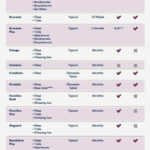Cats, with their graceful movements, diverse breeds, and captivating expressions, have been a source of inspiration for artists and enthusiasts for centuries. Whether you’re a painter, sculptor, illustrator, animator, or simply a cat lover, having access to high-quality Cat References is invaluable. This guide will explore the world of cat references, helping you understand why they are essential and how to use them effectively to enhance your creative projects or deepen your appreciation for these fascinating creatures.
Why Use Cat References?
Using cat references offers numerous benefits across various creative and learning pursuits. For artists, references are the cornerstone of accurate and compelling depictions. Trying to draw or paint a cat from memory can often lead to anatomical inaccuracies or stiff, unnatural poses. References provide a visual library, allowing you to study:
- Anatomy and Proportions: Cats have a unique skeletal structure and musculature. References help you understand the subtle curves of their spine, the angles of their limbs, and the way their muscles flex and relax in different poses. This knowledge is crucial for creating believable and dynamic cat art.
- Variety of Poses and Actions: Cats are incredibly expressive and move in a wide range of ways. References capture these diverse poses, from a relaxed feline stretching out in the sun to a cat poised to pounce. Studying these references expands your understanding of feline movement and allows you to portray a wider range of actions in your work.
- Coat Patterns and Textures: From sleek Siamese to fluffy Persians, cat breeds exhibit an amazing array of coat patterns, colors, and textures. Cat references showcase these variations, enabling artists to accurately represent different breeds or create unique and imaginative feline characters.
- Lighting and Shadow: Understanding how light interacts with a cat’s fur and form is vital for creating depth and realism in art. References demonstrate how light and shadow play across different coat types and in various environments, helping you master light and shadow techniques in your cat depictions.
Beyond art, cat references are also valuable for:
- Breed Identification: Learning to differentiate between various cat breeds becomes easier with visual references. You can study the distinct features of breeds like Bengals, Savannahs, or Siamese cats through detailed imagery.
- Understanding Feline Behavior: Observing cats in different poses and situations through references can provide insights into their behavior and communication.
Types of Cat References
Cat references come in various forms, each offering unique advantages:
- Photographic References: Photos are the most readily accessible and widely used type of reference. They capture a moment in time with precise detail, including lighting and texture. Websites like wildlifereferencephotos.com offer a vast library of high-quality cat photos specifically for reference purposes.
- Video References: Videos are excellent for studying movement and dynamic poses. They can capture subtle shifts in weight, fluid motion, and changes in expression that are harder to discern from still images alone.
- Live Cat Models: If you have a cat or access to one, observing them directly is an unparalleled reference source. You can sketch them in real-time, capturing their unique personality and nuances of movement.
- Anatomical References: For a deeper understanding of feline anatomy, consider using anatomical charts, diagrams, or even 3D models. These resources provide insights into the skeletal and muscular structure beneath the fur.
Utilizing Cat References Effectively
To make the most of your cat references, consider these tips:
- Study, Don’t Copy Blindly: References are tools for learning and understanding, not for tracing or direct copying. Analyze the underlying structure, proportions, and light patterns rather than just mimicking the outlines.
- Use Multiple References: Combining references from different angles and in various poses provides a more comprehensive understanding of your subject. Don’t rely on a single image; explore different perspectives.
- Focus on Key Features: Identify the most important aspects you want to capture, whether it’s the sleekness of a Bengal cat’s coat, the playful energy of a kitten, or the piercing gaze of a feline portrait. Use references to emphasize these features.
- Consider Lighting and Composition: Pay attention to how lighting affects the cat in your reference image. Note the direction of light, the cast shadows, and how these elements contribute to the overall mood and composition.
- Practice Regularly: Consistent practice using cat references will improve your observational skills and your ability to translate what you see into your artwork.
Finding High-Quality Cat References
Sourcing excellent cat references is crucial for achieving accurate and inspiring results. Here are some resources:
- Wildlife Reference Photo Websites: Websites like wildlifereferencephotos.com specialize in providing high-resolution images of animals, including a wide variety of cat breeds and poses, specifically for artists and creators.
- Stock Photo Websites: General stock photo sites can also be a source of cat images, although the quality and suitability for artistic reference may vary.
- Personal Photos: If you own a cat, take your own reference photos! Capture them in various poses, lighting conditions, and environments. These personal references can be incredibly valuable as they reflect a subject you know well.
- Museums and Libraries: For historical references or anatomical studies, museums and libraries can offer access to books, illustrations, and even taxidermied specimens.
Conclusion
Cat references are indispensable tools for anyone seeking to depict or understand cats more deeply. By utilizing high-quality references and employing effective study techniques, artists can create more accurate, expressive, and captivating feline artwork. Enthusiasts can also benefit from references to learn more about different breeds and feline behavior. Explore the vast world of cat references and unlock new levels of creativity and appreciation for these magnificent animals. Start your journey today by browsing the extensive collection of cat reference photos available online at websites like wildlifereferencephotos.com, and discover the purrfect inspiration for your next project!

